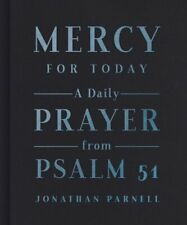The new year is the perfect time to reconfigure the way we do things and that can be a little overwhelming.
Diet, exercise, memorization habits, playlists, time management . . . Is everything okay, but perhaps the best place to start and the basis of everything else?to be the main means of grace in Christian life: the Word and prayer.
- For the Word.
- Justin Taylor has drawn up a large list of Bible reading plans to consider [see here].
- As for prayer.
- You may also find that some systematic approaches are helpful.
Paul Miller warns us that systems become routine, becoming mechanical and inattenting in our prayers. They can numb our communion with God as a person. But he continues: “Remember: life is to shake hands and clean the floor. Do the prayer records and prayer cards are next door?Praying like a child is next door?Take the hand of life. Do we need both. ?
Adapted from Paul Miller, “A Life of Prayer?” (A Life of Prayer), (NavPress, 2009), 225-233.
With a stack of cards of 7 to 10 cm, Miller creates maps for people in various relationships: family members, people in danger, non-Christians and friends.
Guidelines
He concludes: “Write your prayer requests; don’t get carried away by life carelessly in the amazing hectic life in America. If you try to make the most of the day, the day will eventually break you. Take the [Jesus] hem. ” Get dressed and don’t let go until I bless you. Will the day be reformed? (233).
Adapted from DA Carson, A Call to Spiritual Reformation, (Baker Books, 1992), 27-29.
In addition to the printed guides I can use, I keep a folder in my office, where I pray, and usually take it with me when I travel. The first sheet of this file is a list of people for whom I must pray regularly: they are relatives of mine, of whom I am. My wife tops the list, followed by my children and some parents, followed by close friends from all over the world.
Ş
The second sheet of my file lists short- and long-term concerns that will not remain indefinitely; include imminent responsibilities in ministry and various crises or opportunities I have heard of, often among Christians I know little about. things that will soon disappear (such as the plan to write this book!), or that involve people or situations too far away for you to easily remember. In other words, the first sheet focuses on the people I pray for all the time; the second includes people and situations that you should pray for a short or prolonged period, but probably not forever.
The next item in my file is the list of my students, the students for which I am particularly responsible. This list includes notes on their contexts, school curriculums, families, personal concerns, etc. and, of course, this list changes every year.
Is the rest of the file full of letters? Prayer letters, personal letters, sometimes independent notes with someone’s name at the top, which are sorted alphabetically. When a new letter arrives, I highlight all the topics for which it should be prayed and then place it in the appropriate place in the file. The letter you replace is deleted at the same time, so that the sentence record is always active. I try to reserve time to intercede before God on behalf of the people and situations represented by these letters, taking the one above, then the next, and the next, and so on, placing them from top to bottom. at the end of the pile, when I’m done with them. So, even if the list is in alphabetical order, every day a different letter of the alphabet can face me.

